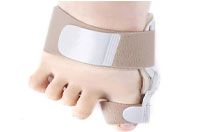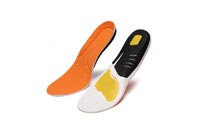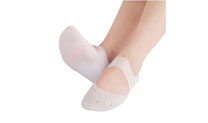For more than 500 years, high-heeled shoes have received countless love and pursuits from beauties. Some women even have hundreds of pairs of high-heeled shoes. If you think about it, she must be a noblewoman. Even those who has less will have at least one or two pairs. Wearing high-heeled shoes can really make women back straight, increase the height, highlight the shape of the front convex back and improve the overall temperament. But whether the high-heeled shoes cost tens of thousands of dollars in luxury stores, or just dozens of dollars in those small stores, long-term wear will inevitably cause foot problems, such as
hallux valgus, corns, sputum, etc., and such patients have also become more and more.
Among them,
hallux valgus refers to the shift of the big toe to the outer side of the first metatarsophalangeal joint. Hallux valgus is a complex anatomical deformity. The bun is the obvious medial protrusion that appears in the hallux valgus deformity, but in general these two terms are used interchangeably. Hallux valgus is the most common lesion involving the toe of the foot. It is more common in middle-aged and older women. It most often occurs in people who have a genetic predisposition and wear inappropriate shoes for a long time. Unsuitable shoes will exert abnormal pressure on the big toe.
High-heeled shoes generally have a triangular shape at the front. When standing in high-heeled shoes, the gravity of the body will push the front part of the foot into the narrow toe part, and most of the high-heeled uppers are made of leather, which is inelastic. Therefore, the thumb of the foot is forced to evaginate and rotate outward, and the small toe is turned inward, and the middle toe is excessively extended. The higher the heel is, the more obvious the effect is. As a result, the normal force point of the big toe shifts, and finally forms hallux valgus. Moreover, hallux valgus is often accompanied by thumb bursitis of the foot and collapse of the forefoot arch.
After the deformity is formed, it is difficult to correct it by itself. The local pain is gradually aggravated and then it becomes difficult to walk. This type of deformity can only be corrected by surgery. It generally manifested as stiff toe of the big toe, with obvious osteophytes appearing on the inner side of the joint. In some patients, the soft tissue of the epiphysis is red and swollen due to long-term friction and friction, which is called bunion. In patients with severe hallux valgus, other fingers may be deflected and rode. Patients with hallux valgus do not necessarily have a feeling of pain because the deformity is not directly proportional to the pain. The cause of the pain is mainly caused by acute bunion which results from compression and friction after the medial bulge of the thumb bony head. The hallux toe joint was not normal for a long time, and the pain caused by osteoarthritis and the jaws of the second to third metatarsal bones.
According to the severity, the hallux valgus can be divided into the following three levels:
1. Mild: The joints are often matched, and the deformity may be caused by the hallux valgus.
2. Moderate hallux valgus: the metatarsophalangeal joint often does not match (semi-dislocation), and the hallux anterior pronation often causes compression on the second toe.
3. Severe hallux valgus: the toe is prone and often overlaps above or below the second toe, and the metatarsophalangeal joints do not match. There is often metastatic pain under the second metatarsal head, which may have arthritis changes.
Physical examination requires assessment of the degree of hallux valgus, other toe deformities, and arch of the foot in the standing position. The morphology of the forefoot and hindfoot was assessed during sitting. The hallux evaluation includes the first metatarsophalangeal joint mobility, the degree of swelling, the degree of protrusion of the medial protrusion, and the presence or absence of a fistula or painful bunion, and whether there is localized sesamoid pain in the plantar surface. Other toe evaluations included hammered toe, unstable or dislocated metatarsal joints, and plantar pain or spasms. X-ray examination of the foot should be performed under the weight position, and the angle of the hallux valgus, the angle between the humerus, the angle of the articular surface of the distal radius, and the angle between the phalanx should also be measured.
According to the different types of treatment, the treatment of hallux valgus can be divided into:
1.Conservative therapy
Conservative treatment is feasible for patients with only malformations and no symptoms or mild symptoms. Wearing looser or open-toe shoes can reduce friction on the medial protrusions and delay the deflection of the toe and further aggravation of the remaining toe deformities by reducing the compression of the forefoot. Place a cushion in the shoe to reduce the pressure on the painful area of the foot. The use of a hallux valgus pad, a night splint and a toe pad may temporarily relieve pain and delay the progression of the deformity. Bunion can be treated with physiotherapy and hot compresses.
2.Surgical therapy
If conservative treatment does not alleviate the symptoms of hallux valgus deformity, surgery can be recommended to correct hallux valgus. There are many surgical methods, but it is not suitable for all patients with hallux valgus. The appropriate surgical method should be selected according to the patient's specific conditions.


